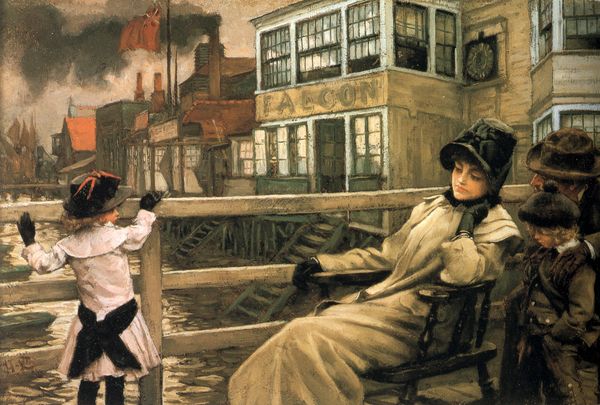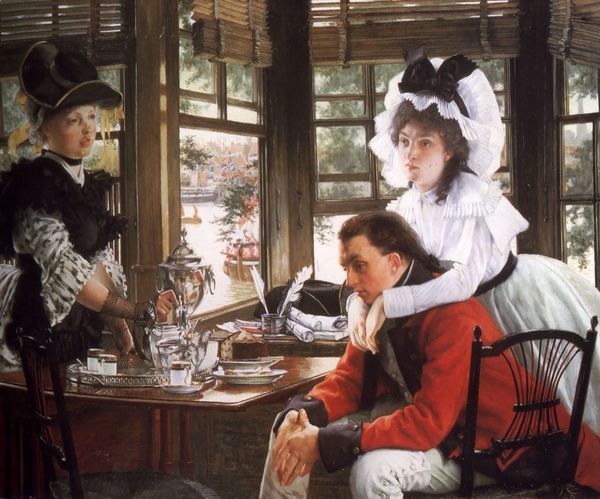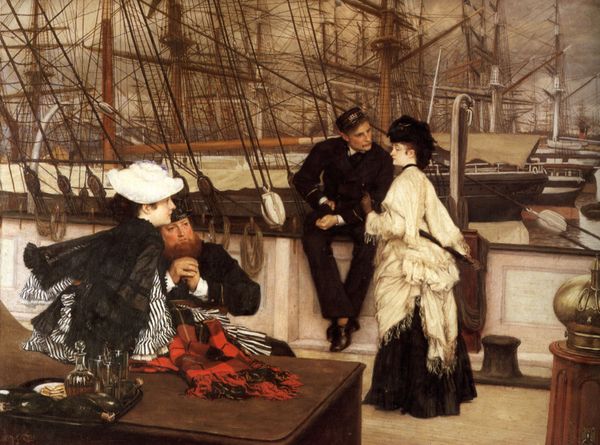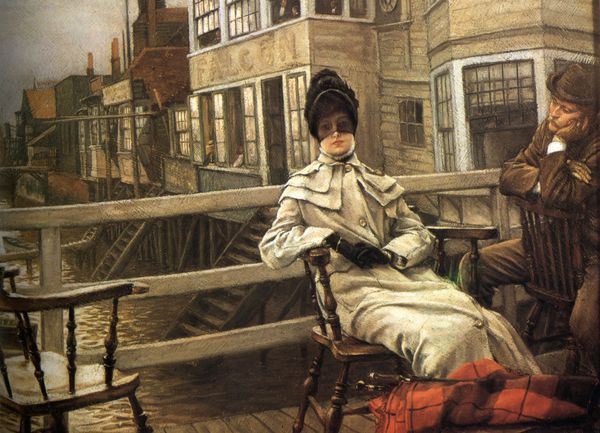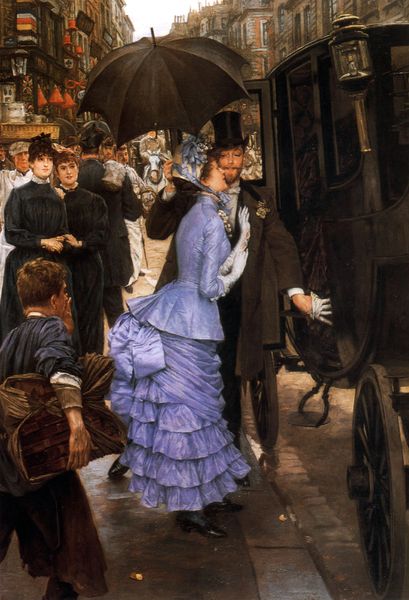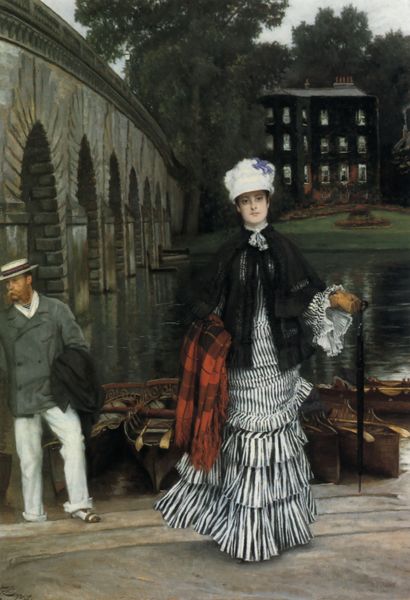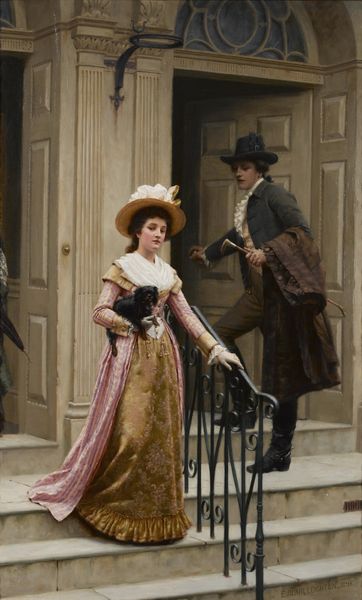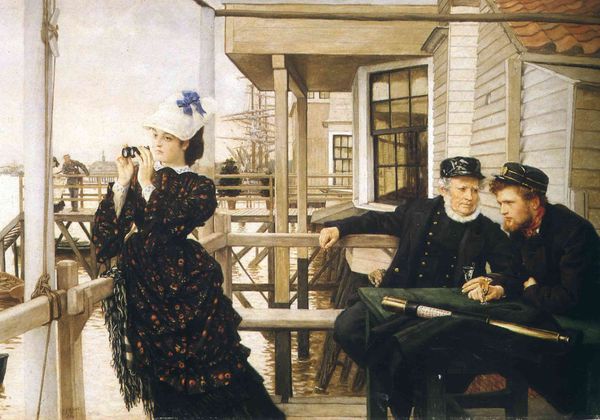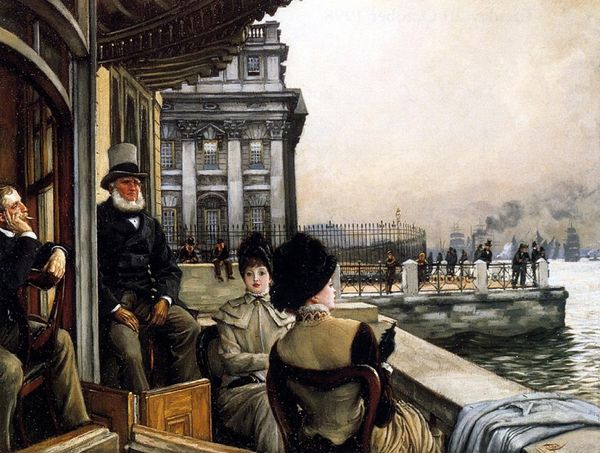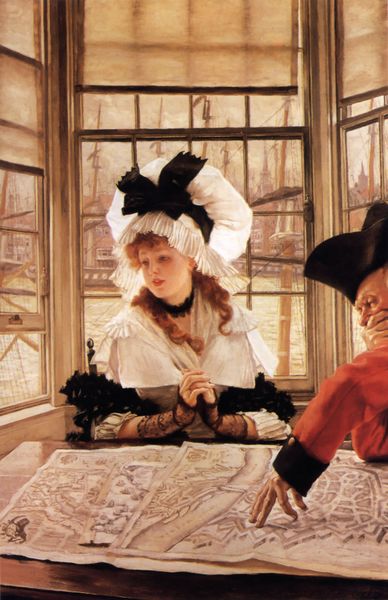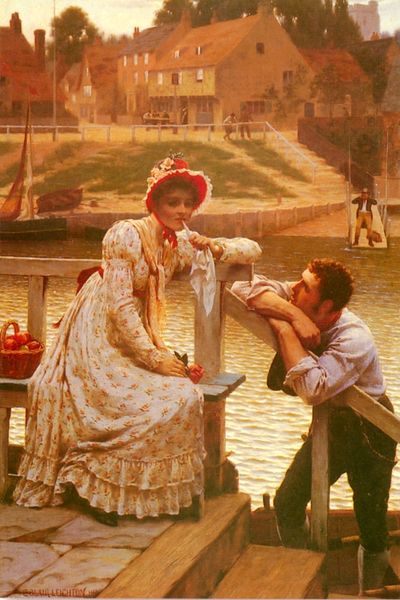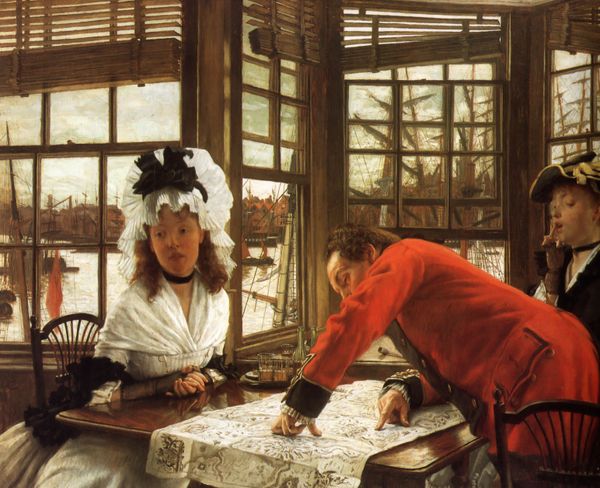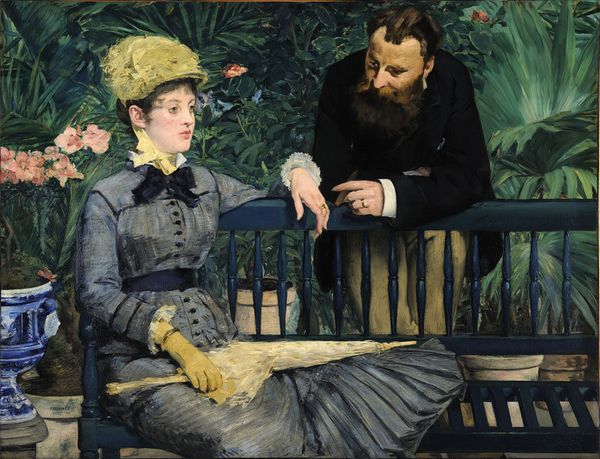
painting, oil-paint
#
conversation-piece
#
portrait
#
figurative
#
painting
#
impressionism
#
oil-paint
#
landscape
#
figuration
#
historical fashion
#
cityscape
#
genre-painting
#
modernism
#
realism
Copyright: Public Domain: Artvee
Curator: James Tissot's "Waiting for the Ferry at the Falcon Tavern," painted in 1874, presents us with a curious riverside scene. Editor: The immediate impression is one of constrained leisure, wouldn't you say? There's a distinct sense of anticipation tinged with a sort of bourgeois ennui hanging over this family group. Curator: Absolutely. Tissot, as a keen observer of social mores, uses symbolic imagery to subtly convey a narrative of status and societal expectations. Notice how the woman's averted gaze suggests a certain dissatisfaction, almost a psychological withdrawal. Editor: Yes, and her attire—so meticulously rendered, yet almost suffocating in its formality—speaks volumes about the constraints placed upon women in that era. The very structure of the composition traps them within the boundaries of their social standing. Curator: And let's not overlook the 'Falcon' tavern itself. The building becomes more than a mere backdrop; it's an active participant in shaping this social drama. Editor: It is almost a stage setting, isn't it? Consider the backdrop. The flags flapping. It could even represent signals, like their expectations. Yet, this location represents both transit and stasis – they're waiting, but where are they going? This connects to debates about rapid urbanization that define the period. Tissot is posing questions. Curator: A vital question, especially when one considers Tissot's artistic position within the Impressionist movement. Here, the focus shifts from purely aesthetic explorations to a commentary on the changing social landscape of modern life. Editor: It does feel very much like Tissot is deliberately using the composition as a kind of social commentary, subtly critiquing the rituals and restrictions of the time. The painting as a space where societal pressures are visualized and, in a sense, judged. Curator: A space indeed, filled with layers of meaning. From its overt display of wealth to its more subtle suggestions of unease, "Waiting for the Ferry" offers us a valuable glimpse into the complexities of Victorian society and its impact on the individual psyche. Editor: Precisely. It makes you think how little some things have changed in over a century; people in public constantly enact similar scenes of social discomfort even today. The weight of social expectations and internal conflicts continue to resonate, prompting conversations about history and ourselves.
Comments
No comments
Be the first to comment and join the conversation on the ultimate creative platform.
